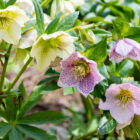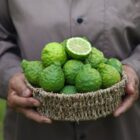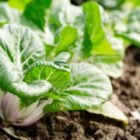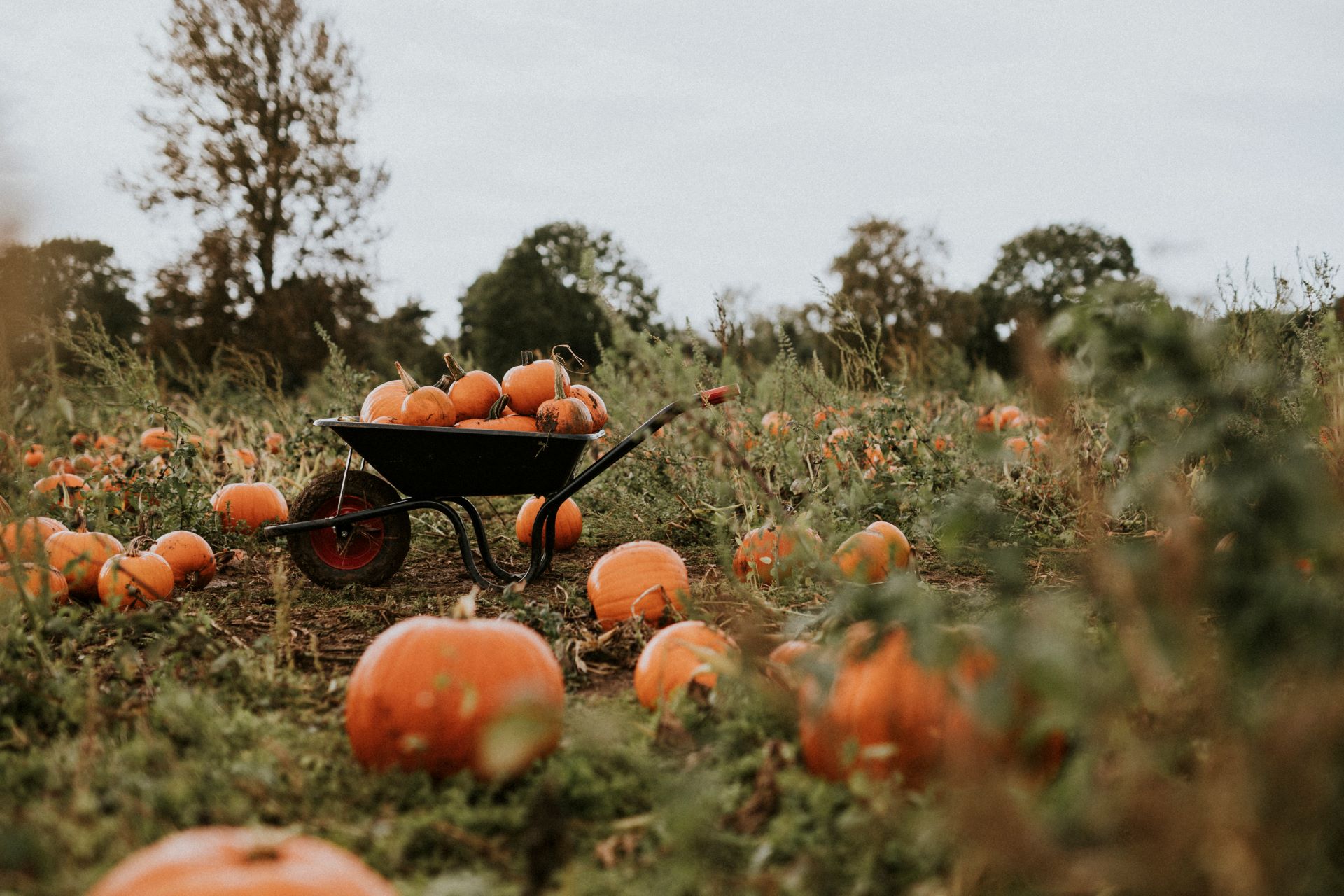
Fertilising and carving Halloween pumpkins
Pumpkins – Health and well-being for our body
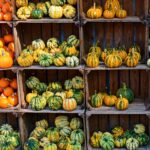 Pumpkins are vegetables with ancient origins belonging to the Cucurbitaceae family, like courgettes, melons, and other fruits and vegetables. They have important nutritional properties, including diuretic and calming properties. Rich in carotenes, substances that the body converts into vitamin A, pumpkins also have antioxidant and anti-inflammatory properties. They also contain minerals such as calcium, sodium, potassium, magnesium and phosphorus, as well as amino acids and other vitamins. Pumpkin seeds, on the other hand, contain protein, but also cucurbitine, an important substance as it helps fight male and female urinary tract disorders. So this autumn vegetable is a source of well-being for our body.
Pumpkins are vegetables with ancient origins belonging to the Cucurbitaceae family, like courgettes, melons, and other fruits and vegetables. They have important nutritional properties, including diuretic and calming properties. Rich in carotenes, substances that the body converts into vitamin A, pumpkins also have antioxidant and anti-inflammatory properties. They also contain minerals such as calcium, sodium, potassium, magnesium and phosphorus, as well as amino acids and other vitamins. Pumpkin seeds, on the other hand, contain protein, but also cucurbitine, an important substance as it helps fight male and female urinary tract disorders. So this autumn vegetable is a source of well-being for our body.
Pumpkins: the best sowing time
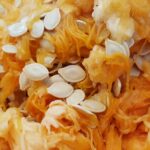 To grow pumpkins, we recommend sowing in spring, as they are vegetables that cannot withstand low temperatures. The pumpkin seeds start to germinate when the temperature is around 25 degrees. The ideal month for growing pumpkins is April. It is actually possible to sow seeds earlier by arranging some pots in a heated seedbed. The transplanting of the sprout will then take place between April and May. Alternatively, one can sow the pumpkin by slipping the seed in the right direction into a small 2-3 cm hole. Its oval seed in fact has a tip, which coincides with the side from which the roots will emerge. For this reason, you should place the seed in the hole with the tip pointing downwards.
To grow pumpkins, we recommend sowing in spring, as they are vegetables that cannot withstand low temperatures. The pumpkin seeds start to germinate when the temperature is around 25 degrees. The ideal month for growing pumpkins is April. It is actually possible to sow seeds earlier by arranging some pots in a heated seedbed. The transplanting of the sprout will then take place between April and May. Alternatively, one can sow the pumpkin by slipping the seed in the right direction into a small 2-3 cm hole. Its oval seed in fact has a tip, which coincides with the side from which the roots will emerge. For this reason, you should place the seed in the hole with the tip pointing downwards.
When to harvest pumpkins?
 Harvest takes place in autumn when the pumpkins have reached optimal maturation. In particular, pumpkins should be harvested between September and November before the onset of frost. However, if temperatures permit, the pumpkins can be left in the vegetable garden and allowed to continue ripening. This sweetens their sugary flesh even more, making them tastier and storable for longer.
Harvest takes place in autumn when the pumpkins have reached optimal maturation. In particular, pumpkins should be harvested between September and November before the onset of frost. However, if temperatures permit, the pumpkins can be left in the vegetable garden and allowed to continue ripening. This sweetens their sugary flesh even more, making them tastier and storable for longer.
How do you take care of pumpkin plant? – Follow Doctor Bioges‘ advice
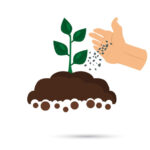 After completing the initial sowing phase, we can turn to the actual cultivation and fertilisation of the pumpkin. But which fertilisers is the best to increase the quality of our crop? Use slow-release organic fertiliser in order to improve the soil structure. Good tillage is also important for fertile soil. Therefore, regular breaking up of clods and raking of the surface is necessary. Remember that it is best to distribute fertilisers on the surface layer of the soil, so that the organic matter gradually releases nutrients. They will then trickle down further with rain or irrigation water.
After completing the initial sowing phase, we can turn to the actual cultivation and fertilisation of the pumpkin. But which fertilisers is the best to increase the quality of our crop? Use slow-release organic fertiliser in order to improve the soil structure. Good tillage is also important for fertile soil. Therefore, regular breaking up of clods and raking of the surface is necessary. Remember that it is best to distribute fertilisers on the surface layer of the soil, so that the organic matter gradually releases nutrients. They will then trickle down further with rain or irrigation water.
Why should you use a garden fertiliser in pellet?
As pointed out, the choice of the right fertiliser for our vegetable garden plants is fundamental, especially in pots. In fact, in the latter case, the nutrients may run out quickly. Therefore, it is advisable to go for an organic pellet fertiliser which, in addition to gradually releasing nutrients, improves soil fertility. Preferably, apply slow-release fertilisers in autumn and winter, to provide all plants with an available reserve when vegetative awakening occurs. This does not detract from the fact that pellet fertiliser are really useful during the entire crop growth cycle, as it is easy to dose and practical to use.
Vegetable garden pellet fertiliser – Discover Day-Horto
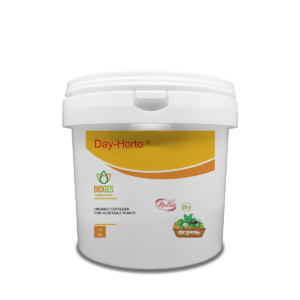 Should you wish to opt for a slow-release pellet fertiliser, Day-Horto is the ideal choice for the nutrition of all vegetable garden plants. Day-Horto is an organic NPK garden fertiliser made from raw materials of natural origin. It is suitable for the nutrition of vegetable, garden and balcony plants. Day-Horto is in pellet, and is able to gradually release all the nutrients the plants need into the soil. The fertiliser is, moreover, based on humified organic matter. Thus, this product is excellent for regenerating poor soils as it improves their structure by stimulating their fertility. It can be used for growing fruit and vegetables for food consumption.
Should you wish to opt for a slow-release pellet fertiliser, Day-Horto is the ideal choice for the nutrition of all vegetable garden plants. Day-Horto is an organic NPK garden fertiliser made from raw materials of natural origin. It is suitable for the nutrition of vegetable, garden and balcony plants. Day-Horto is in pellet, and is able to gradually release all the nutrients the plants need into the soil. The fertiliser is, moreover, based on humified organic matter. Thus, this product is excellent for regenerating poor soils as it improves their structure by stimulating their fertility. It can be used for growing fruit and vegetables for food consumption.
How do you carve a pumpkin easy?
A nice idea is also to grow a Halloween pumpkin to carve later. In this paragraph, we would like to briefly explain how to make a Halloween pumpkin. First of all, you will need a fairly large pumpkin. Then use a felt-tip pen to draw a circular or zig-zag perimeter with a diameter of approx. 15 cm on the top. Using a sharp, pointed knife, make an incision in the upper shell of your pumpkin, cutting out a lid.
Be careful: remember not to break the lid of the pumpkin, it is essential for the success of the finished product. Then dig well inside the pumpkin with a spoon. Scrape out the wall until it is about 5 cm thick. Let it dry overnight and prepare the ingredients to make your pumpkins carved. In order to make the decorations respecting the established proportions, you can use cards as templates to place on the pumpkins. After having created the carvings on the pumpkin, you can also colour it or decorate it with woven ribbons, always respecting the Halloween theme, of course. You can also use the stem of the pumpkin to create the nose.
Halloween sweets
 Growing a pumpkin can be useful for preparing delicious sweets to serve for the mother of all trick r treat. There are plenty of Halloween recipes to experiment with, such as pumpkin pie or, for the sweet tooth, pumpkin and chocolate cake. But there are so many Halloween cakes, and to describe one against another would be a disservice to the many flavours that pumpkin as a vegetable can offer us. It’s up to you to pick up your recipe book and work out which combination with this vegetable will best suit your ‘playful’ needs.
Growing a pumpkin can be useful for preparing delicious sweets to serve for the mother of all trick r treat. There are plenty of Halloween recipes to experiment with, such as pumpkin pie or, for the sweet tooth, pumpkin and chocolate cake. But there are so many Halloween cakes, and to describe one against another would be a disservice to the many flavours that pumpkin as a vegetable can offer us. It’s up to you to pick up your recipe book and work out which combination with this vegetable will best suit your ‘playful’ needs.

